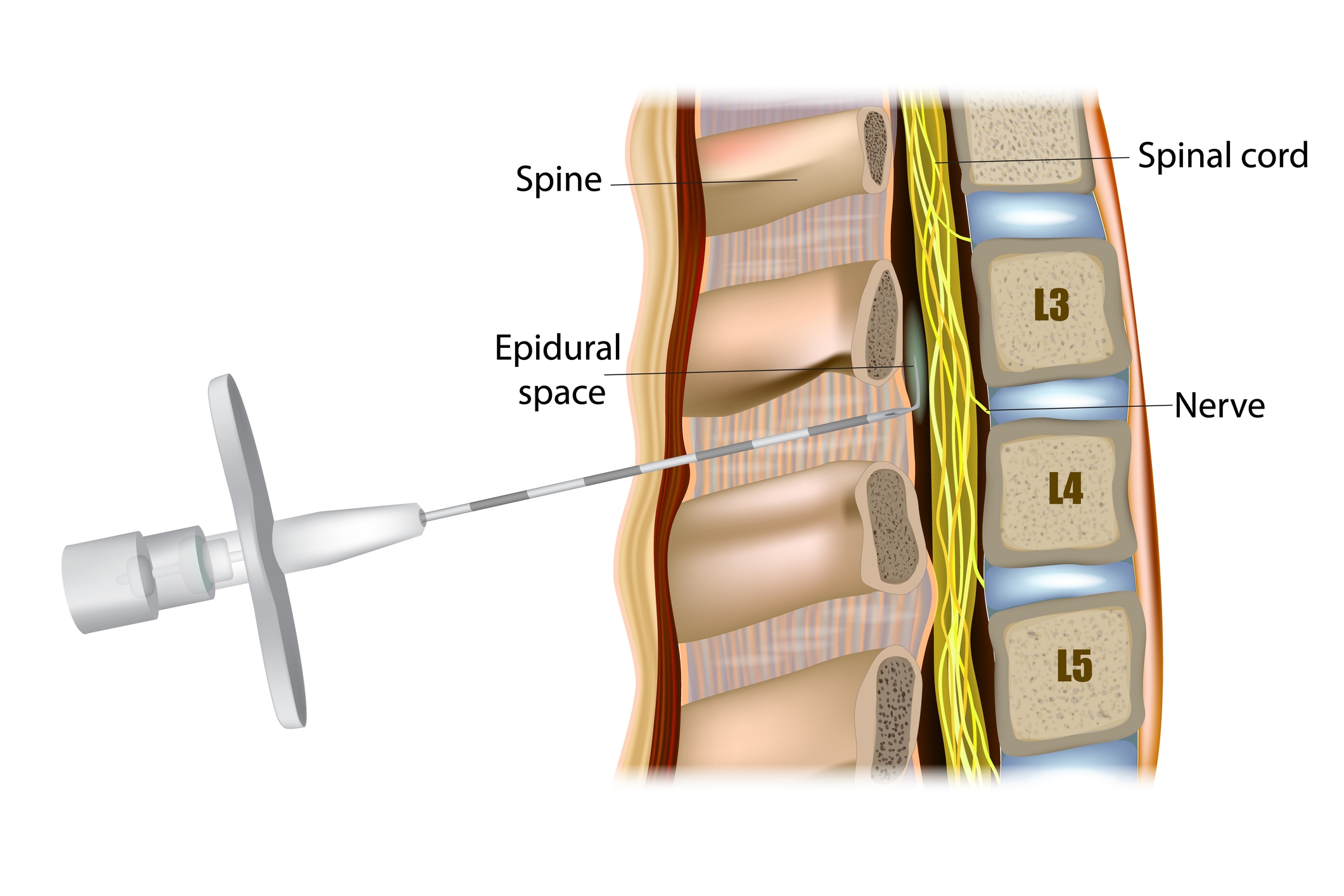Epidural Analgesia
Epidural analgesia is an effective pain relief in labour and delivery, performed by an anesthetist.
The procedure involves inserting a very thin tube (catheter) through the skin at the back into a space outside the spinal cord. Medication is given through the tube either continuously or intermittently.

Side effects and associated risks of Epidural Analgesia
Although it is a relatively safe procedure, there are side effects and associated risks such as:
Common side effects
- Shivering
- Temporary nausea and vomiting
- Low blood pressure
- Skin itchiness
- Leg numbness or tingling in your back and legs
- Fever
- Some degree of pain, more on one side near the time of delivery
Uncommon side effects
- Severe headache
- Temporary high sensory block (such as numbness in the chest which may cause difficulty in breathing, numbness in the hands or in the face)
Rare side effects
- Fetal heart rate changes requiring some interventions, e.g. caesarean section
- Infection
- Persistent area of numbness and/or weakness of lower extremities, lasting week or months
- Bleeding in the spine requiring emergency surgery
- Rapid absorption of local anesthetic causing seizures
- Respiratory and/or cardiac arrest (requiring life support systems)
Extremely rare
- Permanent nerve damage
How is your epidural analgesia given?
- You need to sign a consent form for epidural analgesia
- A drip will be set up on your arm
- The anesthetist or a nurse will position you to sit up or lie down on your side with your knees bent towards your tummy
- The anesthetist will insert a very fine tube (catheter) through the skin at the back into a space outside the spinal cord
- It is important that you keep still during the epidural admission
- After the epidural analgesia is administered, you will be positioned on your side
- The epidural analgesia will take effect in about 10-20 minutes
- The tube is removed after the completion of the delivery
For more information on epidural analgesia, please consult your O&G doctor.
For more information, contact us:
Thomson Specialists (Women's Health)
Thomson Women's Clinic (TWC)
- Novena:
6592 6686 (Call), 8611 8986 (WA) - Bukit Batok:
6569 0668 (Call), 8686 3525 (WA) - Choa Chu Kang:
6893 1227 (Call), 8282 1796 (WA) Jurong:
6262 8588 (Call), 6262 8588 (WA)- Katong (female doctor):
6970 2272 (Call), 8611 9020 (WA) - Punggol:
6243 6843 (Call), 8811 0328 (WA) - Sembawang: 6753 5228
- Sengkang: 6388 8125
- Serangoon (female doctor): 6382 3313
- Tampines: 6857 6266
- Tiong Bahru: 6276 1525
